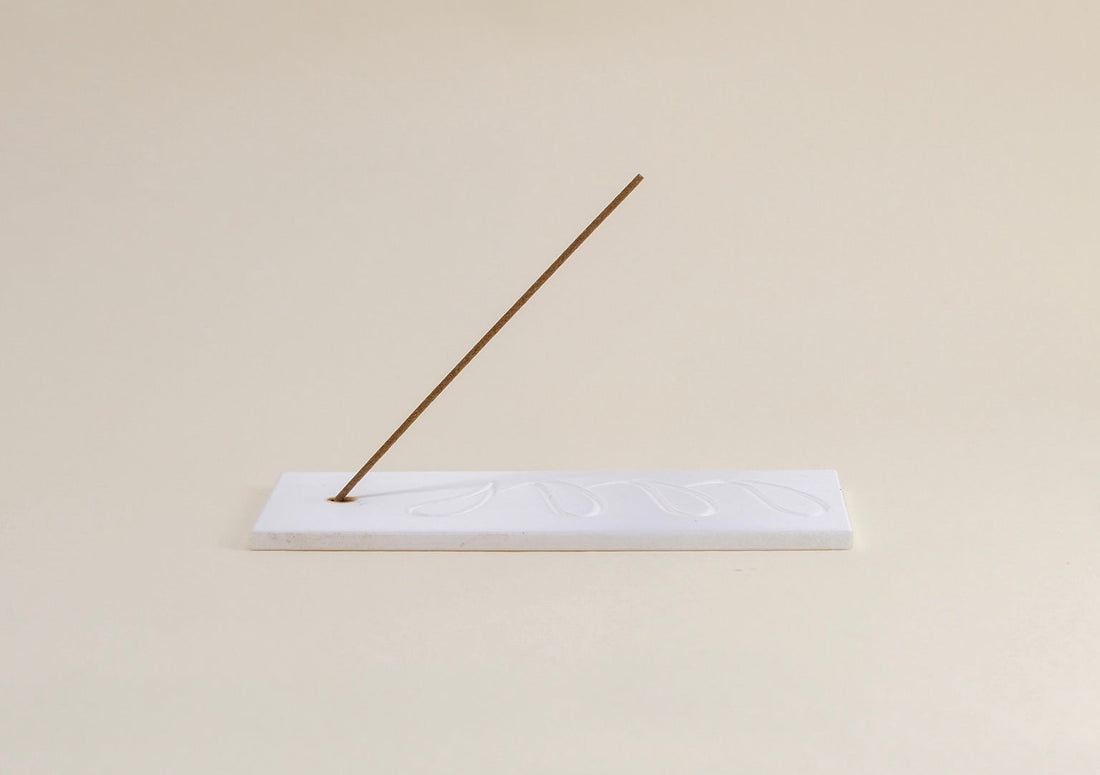
Incense Sticks: A Practical, No-Fluff Guide for Safer, Better Burning
Share
Incense sticks can turn a room from frantic to focused in minutes—but only if you buy well and burn smart.
This guide answers the real questions: moisture, smoke safety, kids at home, stick length, quality, breakage, cultural fit, and product picks for different lifestyles.
If you need ready-to-burn options, see our curated incense sticks and pair them with a stable incense holder for cleaner, safer burning.
What makes a good incense stick?
- Ingredients: natural base (wood powders like tabu no ki/makko) + real aromatics (sandalwood, agarwood, herbs, resins). Fewer synthetics = cleaner fragrance and steadier burn.
- Construction: even density, uniform diameter, straight form. Coreless Japanese-style sticks burn cooler and cleaner; bamboo-core sticks give a stronger first hit but more ash/char.
- Moisture content: properly dried, then sealed—this affects ignition, fragrance clarity, and breakage.

incense sticks absorb moisture easily?
Yes. Incense sticks are hygroscopic. Damp sticks burn unevenly, smell muted, and may go out mid-burn.
Fix: store in an airtight tin or zip bag with a small desiccant; keep away from bathrooms and sunlit windows.
If a box feels soft or bends easily, dry the sticks in their open box for 12–24 hours in a cool, shaded place.
Do incense sticks produce “unhealthy gases”? What about tar?
Any combustion makes smoke (particulates) and volatile compounds.
Cleaner formulas and good ventilation make the biggest difference.
- Choose natural, dye-free incense; avoid heavy synthetic perfume oils.
- Burn one stick at a time in a ventilated room (window cracked open or fan on low).
- Keep the ember visible; don’t let ash build up around it.
- Yes, smoke can contain tarry residues (complex organics from incomplete combustion). Coreless sticks and correct holder height reduce charring.
If you’re sensitive, start with lighter woods (sandalwood), green-herbal profiles, or try shorter sticks.
Is it safe to use incense sticks with kids at home?
Used thoughtfully—short sessions, good airflow, out of reach—yes.
- Burn when children aren’t in direct proximity; keep holders on a high, stable surface.
- Ventilate during and after; avoid use around infants, people with asthma, or anyone sensitive to smoke.
- Extinguish fully; never leave burning incense unattended.
Long vs. short incense sticks—what should I buy?
- Short sticks (10–15 cm, ~15–20 min): ideal for quick resets, apartments, and sensitive noses. Great for testing new scents.
- Long sticks (20–30+ cm, ~30–60+ min): better for large rooms, studios, or slow rituals.
- Tip: If you love a long stick’s scent but want less smoke, snap it in half and burn one half.
Explore sizes in our incense sticks collection and match a weighted incense holder to avoid tipping.
Why do incense sticks break?
-
Moisture swings (absorbing and drying repeatedly).
-
Over-packing or thin cores in cheap sticks.
-
Rough handling in shipping.
Prevention: store flat and sealed; don’t cram boxes; use a tube or tin for travel. Minor breaks still burn fine—just butt the broken end against the ash bed.
Why is it hard to find truly good incense sticks?
Quality incense is regional and artisanal: Japanese Kōdō traditions, Chinese layered woods/herbs, Tibetan resin-herbal blends, Indian masala/charcoal styles. Each reflects local aesthetics and raw materials (e.g., byakudan sandalwood vs. kyara agarwood). Export versions often get reformulated or mass-produced, which blurs nuance.
Good shops disclose materials, style, and burn time. If a product lists only “fragrance” and “color,” pass.
Will people from other regions accept my local incense style?
Scent is cultural—and personal. Minimalist Japanese profiles may feel “clean” to some, “too light” to others; bold masala sticks can be “comforting” or “heavy” depending on the nose.
The bridge is context: use lighter incense for shared spaces and stronger styles for open rooms or outdoor verandas. Offer guests a choice.
Does using incense sticks mean I “love life” more?
It simply means you value sensory rituals: a small cue to slow down.
Whether it’s tea, candles, or incense sticks, a repeatable ritual can mark boundaries—work to rest, clutter to clarity.
Recommendations by lifestyle
Busy office worker
-
Choose: short, low-smoke sandalwood or green citrus-herbal sticks.
-
Why: quick burn, fast ventilation, crisp focus.
-
How: 10–15 minutes while planning your day or after work to switch off.
Try compact packs in our incense sticks and use a tray-style holder that catches ash cleanly: incense holder.
Yoga teacher / slow-living practitioner
- Choose: coreless Japanese sticks (meditative, steady) or natural masala woods/resins for grounding.
- Why: stable ember, nuanced aroma, gentle room fill over a 30–45 minute session.
- How: light one as class begins; another during savasana only if room is well-ventilated.
Quick safety & care checklist
- Ventilate lightly; one stick at a time.
- Use a weighted holder; keep 30+ cm from curtains and books.
- Store sealed with desiccant; avoid heat and sun.
- Keep away from pets and children; never leave burning unattended.
- Sensitive days? Skip burning and try a single incense stick outdoors on a balcony for a minute, then bring the lingering scent back in.
Bottom line: Buy incense sticks made from natural materials, store them dry, burn fewer for shorter, and choose a style that matches your space and purpose.
Pair your favorite scent with a safe, stable incense holder and let the ritual do the rest.
Interested in the Kōdō ceremony, coreless vs bamboo-core craftsmanship, and scent aesthetics?
Read: Incense Sticks in China vs Japan: Culture & Rituals.
